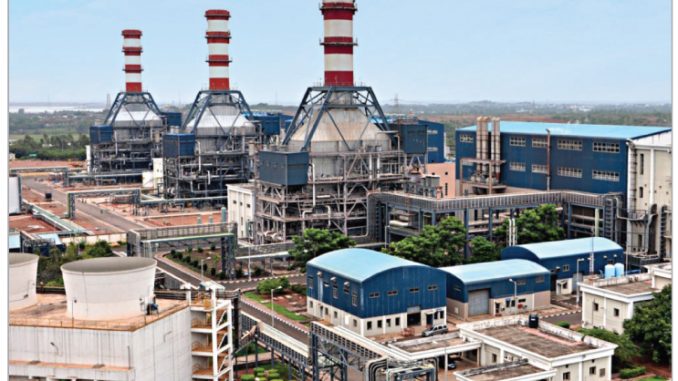
The merger and acquisition space in the power generation segment has gained significant traction in the past one year. The most recent case in point is GMR Energy Limited’s (GEL) 30 per cent stake sale to Tenaga Nasional Berhad, Malaysia’s largest power utility.
In May 2016, GEL announced that Tenaga would make a primary investment of Rs 20 billion in GEL to acquire a 30 per cent stake on a fully diluted basis. The deal is expected to help GEL strengthen its balance sheet and service its corporate debt, which stands at around Rs 27.5 billion. Further, Tenaga’s experience will help GEL augment its operational performance and fast-track the development of upcoming hydro projects.
A part of GMR Group, GEL forayed into power in 1996-97. Since then, it has set up projects worth 4,639.40 MW, comprising thermal (about 95 per cent) and renewable energy. Its project pipeline aggregates nearly 2,330 MW of capacity.
Operational projects
In the thermal segment, GEL has 3,020 MW of coal-based capacity. These projects are the 1,370 MW (2×685 MW) supercritical plant in Chhattisgarh, the 1,050 MW (3×350 MW) Kamalanga plant in Odisha and the 600 MW (2×300 MW) Warora power plant in Maharashtra.
In addition, GEL has 1,391 MW of gas-based capacity across three projects in Andhra Pradesh – the 768 MW Rajahmundry, 388 MW Vemagiri and the 235 MW Kakinada projects. Due to a shortage of natural gas supply, the Vemagiri and Rajahmundry projects had been stranded since March 2013. However, they were revived in October and November 2015 respectively, after gas supply allocations were made under the government’s e-bidding R-LNG scheme for stranded gas-based projects. In addition, GEL operates a 200 MW low sulphur heavy stock diesel-based power plant in Chennai.
The company’s renewable energy portfolio stands at about 28.4 MW, 25 MW of solar capacity in Gujarat, and 3.4 MW of wind capacity in Gujarat and Tamil Nadu.
GEL has also developed two transmission projects. The projects included the development of 365 km of 400 kV transmission lines with two power stations based at Alwar and Deedwana in Rajasthan. In addition, GEL operates two coal mines, PT Barasentosa Lestari and PT Golden Energy Mines in Indonesia, with estimated reserves of 782 million tonnes. It has also acquired the Talabira I and Ganeshpur coal mines in Odisha and Jharkhand respectively through coal block auctions. While Talabira I began commercial operations in August 2015, the Ganeshpur mines would be operational in the next two to three years.
Project pipeline
GEL’s project pipeline aggregating about 2,330 MW, includes projects under construction as well as under development. The 180 MW Bajoli Holi hydro project in Himachal Pradesh is GEL’s only under-construction project. Those under development are Unit IV (350 MW) of Kamalanga, and three hydro projects – the Upper Karnali (900 MW) and Upper Marsyangdi (600 MW) in Nepal and Alaknanda (300 MW) in Uttarakhand. The company will also construct two dedicated transmission lines (276.9 km) for power evacuation from the two projects being developed in Nepal to India. Besides, two hydro projects – Talong Londa (225 MW) in Arunachal Pradesh and Badrinath (300 MW) in Uttarakhand, are also on the anvil.
Investment by Tenaga
For the Tenaga deal, GEL’s projects have been classified into two portfolios – A and B. At present, Tenaga will undertake investments in portfolio A, which includes the Warora and Kamalanga (coal-based), and the Kakinada and Vemagiri (gas-based) projects, and a 25 MW solar project, as well as all the under-construction and under-development generation projects. Moreover, Tenaga will have the right to invest in portfolio B, that is, the Chhattisgarh plant and the Rajahmundry gas project, any time within the next five years. The Indonesian coal mines, transmission projects and remaining generation assets have been excluded from the deal. For the deal, Tenaga’s equity valuation of GEL stands at around Rs 66.65 billion, which is higher than analyst estimates. This augurs well for the company. Although GMR’s share after the deal will reduce to 52 per cent, it will remain the majority shareholder. Tenaga will hold 30 per cent stake and private equity investors will hold the remaining.
The way forward
GEL’s target is to increase its installed capacity to 8,379.35 MW by 2020-25. It aims to increase profitability and improve the operational performance of the company’s assets. In order to increase the cash flow from operational projects, GEL’s key priority would be to tie up capacity of around 17 per cent under long-term power purchase agreements.
Net, net, Tenaga’s investment is expected to increase GEL’s attractiveness and allow it to unlock value at an appropriate time in the future, helping it achieve its future goals. Overall, for the power sector, the deal indicates that investor interest continues to remain high.
